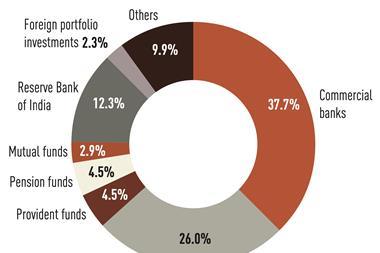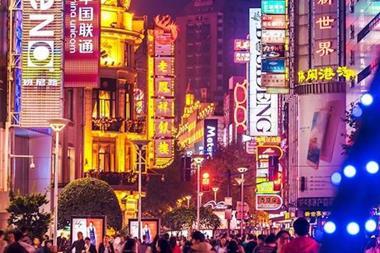Financial services and asset managers understand the potential savings of outsourcing and technology on middle and back office functions. However, the financial crisis and changing regulations that are still being discussed and drafted have forced them to reassess their operations and outsourcing plans from more constructive perspectives. Initial strategies were originally based on surviving and regaining competitive position amidst fierce business conditions through cost savings. However, the need to adapt to regulations while growing business has demanded a sophisticated understanding of how technology and outsourcing work together.
To simply express that everything has changed may initially sound trite, but outsource service providers unanimously describe changes that will entirely alter how the finance and asset management industries plan, process and run their businesses. Laurent Villiers, Sophis Risk Product Manager at MISYS says: “A myriad of new OTC regulations are on the way, but they are manageable. The major change will affect clients work flow and process. More risk calculations will be required pre-trade, which can be accommodated in the applications, but it will demand clients to do more planning.”
Villiers points out the areas that will be most affected. “An increasing amount of automation will be required to clear investments and trades before execution. Post trade parameters like reporting and calculating volatility, returns and price movements are under more scrutiny in today’s markets.”
New priorities
Trading on the OTC market is already dramatically changing due to new regulations that are forcing participants into stricter trading and reporting processes. Furthermore, new capital requirements are compelling participants to ration balance sheet capital. Entire trading desks and businesses are being restructured to meet new priorities.
Judson Baker, Product Manager, Northern Trust, Corporate & Institutional Services, has observed major shifts from his office in Chicago. “Post 2008, a lot of financial infrastructure has changed significantly. There’s been a big impact on dealers- cutting into their activities due to Volker Rule, AIMFD, European regulations.”
Baker details some of the specific affects on market instruments and trades. “Credit attached to derivatives will be affected by new regulations. Regulations will require mandatory clearing for certain types of swaps like IRS (Interest Rate Swap) and CDS (credit default swap). Mandatory clearing means pledging more margin for these trades. Many organisations on the buy side will have to clear their swaps.
“Additionally, the regulations are also likely to impose stricter margin requirements on the swaps that remain as OTC trades. So initial margin needs to be pledged on all trades.”
The broad redrawing of trading guidelines will produce sweeping changes to technology and markets. Baker warns: “This will result in a disincentive for OTC trades and an incentive to trade on regulated and supervised exchanges. But, OTC will still be busy as customised products and trades are always needed. However, they will cost more.”
And new capital requirements will dramatically affect buyers and sellers. “The new regulations mean that dealers and clearing houses will have to set aside capital and fully reserve against their trades not just produce margin. The costs of complying to these capital requirements will be passed through to clients on the buy side.”
Geoff Harries, Global Head of Asset Servicing for DST, says rising costs have the greatest affect on the OTC market’s reforms and derivatives. “Critical operations and cost issues include transparency, investor protection and reducing systems risk. There is more pressure to move to a central counterparty for clearing to add more transparency in swaps and processing of derivatives.”
The regulatory regime
Despite its planned implementation in 2014, Harries says “other countries are trying to interpret how Dodd-Frank’s OTC reforms will affect their operations.” DST is a major provider of services for the middle to back office functions so Harries’ conclusions signify permanent developments ahead. “Everything post-trade will change. There will be intraday margin processing that generates more transactions in settlement and more regular revaluation of positions, all of which requires independent pricing of positions.”
The new, intensely detailed post trade environment in areas such as swap processing will need more capacity and robust systems. Harries warns: “Participants will need to interface with market infrastructure so in house solutions can’t be used. And regulators will limit your trading volume if you cannot comply.”
One of the interrelated, but important side effects of the regulatory regime is how it will drive all participants into deciding priorities for capital and back office resources. Baker says: “Capital rationing will be the likely result of these changes. Higher charges or hurdle rates will be enforced by market participants. Banks need to choose businesses and clients, counterparties to optimise risk and return. Ultimately, the goal is to determine the use of capital. They will have to hold higher quality collateral.”
Baker cites an example of how. “Activity in the repo market will be affected as more capital is reserved. Quality assets that are held in segregated accounts cannot be pledged, re-pledged or sold. Trillions of dollars of new collateral will need to be re-pledged. A lot of capital will be pulled from the repo market for collateral.”
New systems are being designed to cope with these type of capital risk decisions and their implications for counterparty risk and default throughout the process. Villiers says: “Today, our asset management clients are seeking stress testing applications that work on a real time basis as a mandatory feature. Their technological requirements demand more sophisticated solutions. Clients want a holistic, front to back system for seamless and complete risk management. Fully integrated systems are favoured as they have fewer weaknesses and reduce operational risk.”
But, even as entirely new systems are being designed, they are being challenged by an international regulatory environment where individual jurisdictions do not necessarily cooperate with each other. Villier warns clients that “participants in the markets need to adapt and change the way they work because constantly changing regulations are introducing new parties from outside of the system.”
The implication he adds is that “globalised trading of multiple asset classes through different legal jurisdictions creates operational problems for both the client and service provider. Information related to these trades must comply with international and local laws and regulation. This requires the service provider to employ support staff in all markets.”
New demands
Outsourced, managed service providers are preparing themselves for new demands from investment management community. Besides seeking operational and cost efficiencies, Harries believes developing a scalable operating platform that seamlessly works globally and regionally. Such a platform benefits a typical investment manager who is under continued pressure to reduce costs especially on non-core activities - those that do not add client value or create new product. Increased regulatory reporting will also require investment in operations data management to make data more accessible.
As a result of such platform and technology requirements and innovations, Harries boldly asserts: “Outsourcing could increase by 40% over the next few years as asset managers better understand the trends underlying this migration. Those who won’t outsource may find themselves spending 50% of their operating costs on compliance expenses. It will constrain an asset manager’s ability to launch and support new products. Indeed, reduction of headcount by 50% in process through automation.”
A range of outsourced services all the way down to hosting frees up internal management and all the people and resources needed to run infrastructure. Large outfits like DST leverage their sizeable investments in accounting and management systems to offer clients a total solution. This includes custodian, administration, execution, compliance, post trade compliance, risk management, reporting.
Harries believes that, “most asset managers realise that effective outsourcing allows them to focus and execute well on their core business.”
The middle-to-back end business process as a fully outsourced service appears to be gaining acceptance. It allows firms to share a utility model and gain economies of scale and efficiency. Software as an independent, outsourced service will continue to be sought by firms so that a customised and single solution can be created in the cloud. However, in order for this trend to maintain credibility outsourced, managed services will need to adhere to best practices and be accredited with global certifications in order to enter emerging and complex technology initiatives such as cloud, big data and smart grids.
According to Baker: “Clients of asset managers are more comfortable today with outsourced back office functions and appreciate independent reporting and administration.”
He also warns that some scaling may not be feasible because “banks sharing back office support for their proprietary trading desks may need separate systems under new regulations. Some participants will find a loss of economies of scale for some of their proprietary trading desks.”
Clients in Asia
Asian financial institutions are also moving towards the acceptance of advanced, outsourced service providers and cloud applications because increasing regulation is an incentive to outsource. Villiers says: “Demand for new systems in China and the rest of Asia is rising. Since many of them will be new entrants, they are more inclined to change their processes.”
China is a particularly large prospect. But Asian clients can pose special problems. Villiers adds: “The biggest challenge in working with Asian clients is replacing their legacy systems. In some instances, parts of their existing infrastructure can be retained or modified, however, outright replacement is usually the optimal practice as it results in smoother and more consistent operations for the end users.”
Trends in outsourcing and managed services for financial services show that operations and technology will be increasingly integrated. The ultimate outsourcing vision and scope is the near elimination of mid and back office functions and a massive reduction of services hosted in-house.












No comments yet